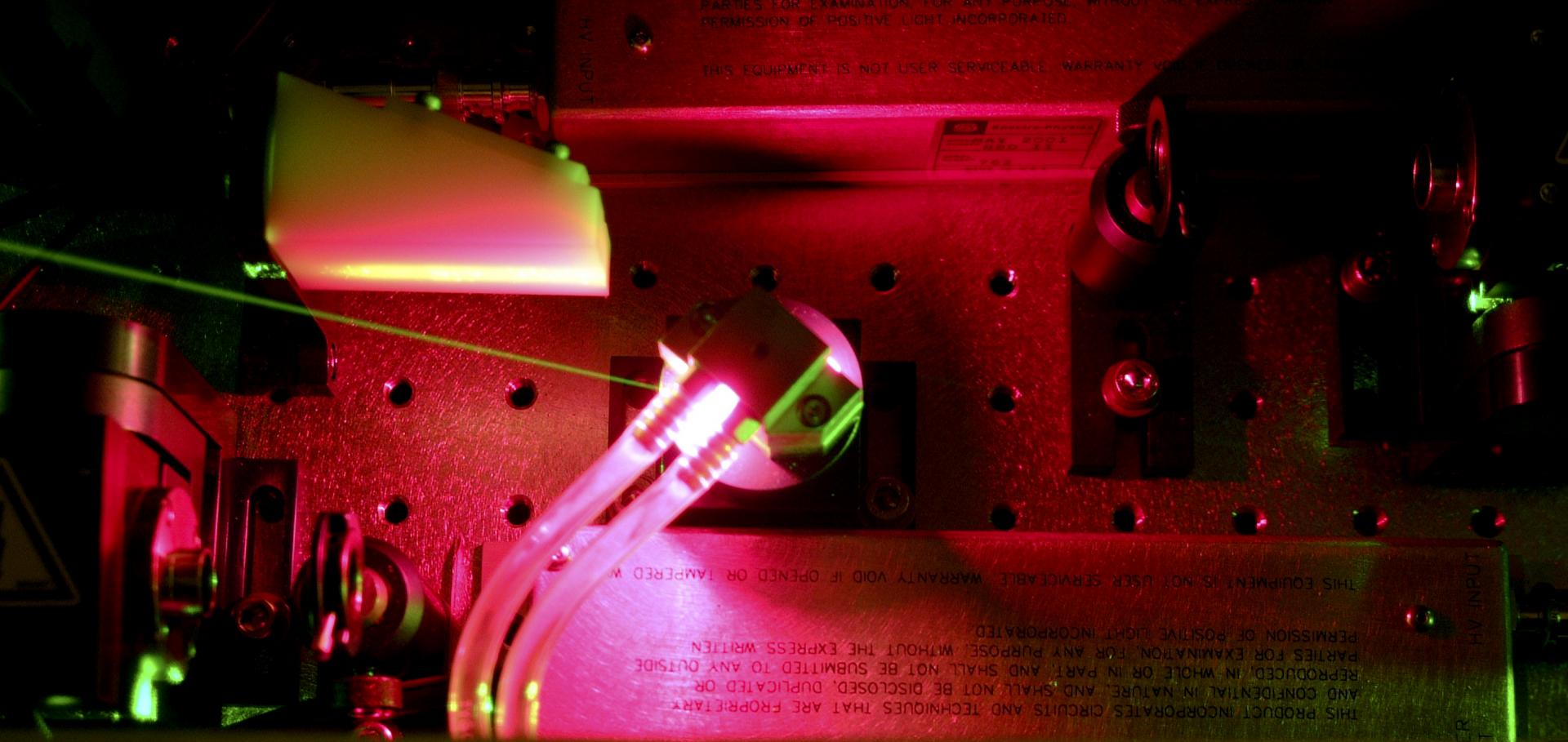Observation of laser oscillation in nitric oxide at 218 nm.
Opt Lett 15:8 (1990) 437-439
Abstract:
We have recently proposed a scheme to produce coherent radiation at eight or more wavelengths between 158 and 242 nm by optically pumping a high-lying electronic level of nitric oxide. We report here the successful operation of this scheme to produce laser oscillation at 218 nm. The possibility of using this scheme to produce laser oscillation at other wavelengths is discussed.F2-PUMPED NO - LASER OSCILLATION AT 218NM AND PROSPECTS FOR NEW LASER TRANSITIONS IN THE 160-250NM REGION
IEEE JOURNAL OF QUANTUM ELECTRONICS 26:9 (1990) 1529-1535
THE ABSORPTION OF 158-NM RADIATION IN NITRIC-OXIDE - THE PROSPECTS FOR AN OPTICALLY PUMPED VACUUM ULTRAVIOLET-LASER
APPLIED PHYSICS B-PHOTOPHYSICS AND LASER CHEMISTRY 51:2 (1990) 127-131
Proposed vacuum ultraviolet laser in nitric oxide
(1989) 112-113
Abstract:
An optically pumped laser that operates in the VUV region of the spectrum with pulse energies in the millijoule range is proposed. The laser is expected to oscillate on ten to 13 new laser lines between 158 and 250 n. The transmission of the F2 pump laser output was measured as a function of NO pressure to deduce the absorption cross section. The absorption was also modeled using spectral rate equations. The model reproduces the observed transmission very well and predicts that the broadening of the absorption line is due to rapid quenching of the upper level. The measurements are not consistent with the results reported by T.J. McKee The predicted upper level population is of the order of 8 × 1014 cm-3 for an NO pressure of 800 mbar, which would give a small signal gain of ≈ 1 cm-1 for the strongest line. On the basis of this it appears to be possible to realize the proposed laser.Guiding of high-intensity laser pulses in 100mm-long hydrodynamic optical-field-ionized plasma channels
Phys. Rev. Accel. Beams 23 081303-081303


